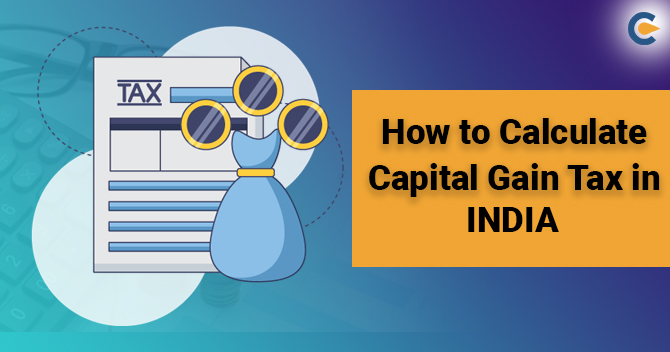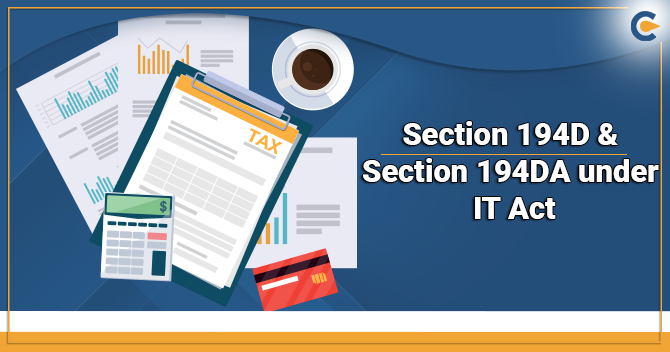Capital gain is defined as any gain or profit that is received by the sale of the capital assets. As because this gain comes under the category of ‘income’ so it is mandated to pay a tax for that amount in the year during which the transfer of the capital asset is done. Therefore, capital gain tax is a tax paid on the income that is received on capital gain.
Capital gain tax in India can be both short-term capital gain tax and long-term capital gain tax. Today in this article we will explain to you about the calculation of capital gain tax in India.
What is Capital Gain Tax?
Capital gain tax are the tax levied under the Income-tax act[1] on the growth in value of investment or in selling of the capital assets for higher price by the individual or corporation. Inherited properties are excluded under Capital gains as these properties are not sold and there is only an ownership transfer. Therefore, the Income Tax Act has purposely exempted those assets that are received as gifts through a will or as an inheritance. Nonetheless, if the person who inherited the asset decides to sell it, capital gains tax will be applicable on them.
What are Capital Assets?
Capital assets are defined as a kind of property that is held by an assesse and shall include assets connected with assesse’s profession or business. Capital assets shall also include any securities as held by FII and has invested in such securities in compliance with the regulations under the SEBI Act, 1992 In simple terms, the Capital Assets shall include any house property, building, house property, leasehold rights, vehicles, machinery, patents & trademarks and jewellery are a few examples of capital assets. Capital assets can be any right in relation to any Indian company and the rights of control and management or any other legal right.
The following are the few exceptions that do not come under the capital asset category:
- Agricultural land in rural sector India.
- Any consumables or any raw material or stock held for the intention of profession or business.
- Special bearer bonds (1991)
- Personal goods like clothing and furnishings held for personal use.
- 7% gold bonds (1980), 6½% gold bonds (1977) or gold bonds of national defence (1980) as has been issued by Central Government.
- Under the Gold Monetisation Scheme, 2015 the issuance of deposit certificates and issuance of Gold deposit bond under the gold deposit scheme (1999).
The capital gain tax shall be calculated on the capital assets and it is essential to determine the Definition of rural area – which shall cover any area outside the municipality jurisdiction of outside the jurisdiction of cantonment board. The population of 10,000 or above is regarded as the rural area. Also, the rural area must not be within a distance aerially measured as has been given below – (population is as according to the last census) :
| Distance | Population |
| 2 kms from the local limits of the cantonment board or municipality | In case the population of the cantonment board/ municipality is beyond 10,000 but not more than 1 lakh. |
| 6 kms from the local limits of cantonment board or municipality | In case the population of the cantonment board or municipality is beyond 1 lakh but not exceeding 10 lakh |
| 8 kms from the local limits of cantonment board or municipality | In case the population of the cantonment board or municipality is beyond 10 lakh |
Classification of Capital Gain Tax in India
The capital gain tax can be classified as follows –
Short-Term Capital Asset
Any asset that is held for the time period of 36 months or less is called as a short- term capital asset. The time period of 36 months has been reduced to 24 months in cases of unlisted shares of the company and for the immovable properties like house property, building and land.
The time period of holding of 36 months has been reduced to 12 months with respect to certain assets like equity shares or preference shares and Securities like debentures and bonds that are listed on recognised stock exchange in India.
These shall also include Units of UTI whether it is quoted or not, the equity units oriented mutual funds and Zero Coupon Bonds which is quoted or not. But when such above given assets are held for a period of 12 months then they shall be considered as long- term capital asset.
The tax rate on short term capital gain is given under section 111A and the same is charged to 15% tax including the surcharge and cess. The short term capital gain other than section 111A is charged in accordance with the total taxable income of the taxpayer that can be a normal rate of tax.
Long Term Capital Asset
Any capital asset that a taxpayer holds for the time period of more than 36 months immediately before the date of transfer shall be treated as long term capital asset. The time period of 36 months is to be considered as 24 months in case of the unlisted shares. But for immovable property being building or land or both the period of holding is considered as 24 months from AY 2018-19.
Examples of a Long-Term Capital Asset
- Listed Equity Shares on the recognized stock exchange,
- units of equity-oriented mutual funds,
- listed debentures and Government securities,
- Units of UTI and Zero-Coupon Bonds.
A transfer is giving up your personal right on an asset to another person. It includes sale, exchange compulsory acquisition under the prescribed law and relinquishment.
The tax rate of Long-term capital asset for any equity-oriented mutual funds or on sale of equity shares and any business unit trust that is held beyond one year will be chargeable to tax at 10% in addition to cess @ 4%.
Tax on Short-Term and Long-Term Capital Gains
| Tax Type | Condition | Tax Applicable |
| Long-term capital gains (LTCG) tax | Exceptions are -equity shares sale / equity oriented fund units | 20% |
| Long-term capital gains (LTCG) tax | On Equity shares sale / equity oriented fund units | 10% over and above Rs 1 lakh |
| Short-term capital gains (STCG) tax | In case where the securities transaction tax is not applied | The STCG is added to Income Tax Return and then the taxpayer is taxed in accordance with his income tax slab. |
| Short-term capital gains tax | In cases where the securities transaction tax is applicable | 15%. |
How to Calculate Capital Gains?
The capital gains are calculated depending on the time period during which that asset has been held by the taxpayer. So, depending upon the time period the calculation of Capital Gains shall vary. Few of the significant points that an individual taxpayer must know while calculating capital gains are given below:
Cost of Improvement
Any expense incurred by the seller for the reason of any additions or alterations that is required to be done in the property. Nevertheless, any such improvement made before 1 April 2001 shall not be considered.
Acquisition Cost
The amount of money that the seller paid for acquiring the property.
Full Value Consideration
The full consideration or the money amount received by the seller because of the transfer of property. The charges on Capital gains are levied from the transaction year even if no money was received in that specific year.
How to Calculate Short-Term Capital Gains?
Step 1: The individual must start with the full value of the property in consideration
Step 2: The given below mentioned shall be deducted –
- Expenses incurred exclusively in connection with the transferring of the property.
- Costs incurred in acquisition of property.
- Costs incurred in improvement of property.
Step 3: Thus, the amount calculated after deduction is the short-term capital gain.
Short Term Capital Gain
Full value consideration minus expenses exclusively incurred on such transfer minus cost of acquisition &cost of improvement.
Read our article:Is Capital Gain Tax incapable of levying upon Registration of Sale Deed? Know-How!
How to Calculate Long-Term Capital Gains?
Step 1: The individual shall start with the full value of property in consideration.
Step 2: The individual shall deduct the following given below:
- Indexed cost of acquisition
- Indexed cost of improvement
- Expenses incurred exclusively in connection with the transferring of the property.
Step 3: From the result of the above calculation the exemptions provided under sections 54, 54EC, 54F, and 54B shall be deducted.
Long-Term Capital Gain
Full value consideration minus expenses that is incurred completely for transfer of property minus Indexed cost of acquisition andIndexed cost of improvement.
Capital Gain Tax on Shares
In India, the long-term capital gain on listed shares exceeding Rs 1 lakh comes under the purview of taxation. They will pay tax at 10% as per the Union Budget 2018. The long-term gains are taxed at 10% and short-term gain is taxed at 15%. However, in the case of debt mutual fund both long term and short term, the capital gain comes under the purview of taxation.
The short-term capital gain on debt mutual fund is computed along with the income and it is taxed as per the Income-tax slab rate. On the other hand, the long-term capital gain on debt mutual fund is charged at 20% with the indexation and 10% without indexation.
Indexation means adjusting the purchase value of inflation. The indexation increases the cost of purchase and lowers the gain.
Let’s us understand this with an example-
“On 1 July 2017, Mr. Mohan purchased shares at Rs 200 and then sold it on 31 December 2018 at Rs 250. The value of the stock was Rs 230 on 31st January 2018. Out of the capital gain of Rs 50, Rs 20 is not taxable. The remaining Rs 30 is taxable as Long Term Capital Gain at 1% without indexation.”
How to Calculate Capital Gain Tax
- Short-term capital gain= Full value consideration- (Cost of acquisition + cost of improvement + cost of transfer)
- Long-term Capital Gain= Full value of consideration accruing or received – (indexed cost of acquisition+ indexed cost of improvement + cost of transfer)
- Indexed cost of acquisition = cost of acquisition x cost of inflation index of the year of transfer/cost inflation index of the year of acquisition.
- Indexed cost of improvement = cost of improvement x cost inflation index of the year of transfer/ cost of inflation index of the year of improvement.
Cost of transfer includes brokerage paid for arranging the deal, advertising cost or any legal expenses.
Capital Gain Index
It is very stringent to have a keen knowledge of the cost inflation index when you are calculating the long-term capital gains. It calculates by deducting the indexed cost of acquisition and indexed cost of the improvement.
The concept of indexation was first introduced as the value of a rupee keeps changing due to inflation. If it is fair to pay more for toothpaste over the years, it is fair to pay capital gain tax by incorporating the effect of inflation on your purchase. Indexation lets you clear a higher purchase cost of the capital asset that you bought, this helps to lower your overall profit.
The Cost Inflation Index is used for calculating the acquisition price.
Capital Gain Tax on Sale of Property
The profit from the sale is charge under Income tax and not the whole amount itself. Furthermore, if you sell the property in 2 to 3 years then it is known as short-term capital gain and liable as per the income tax rule. It usually attracts a flat 20% of tax.
The long-term gain from the sale of capital assets is exempt under 54 and 54F. Therefore, the amount invested in the purchase or construction of a house property subject to certain conditions is also exempt.
So, it is wise to purchase the residential house before 1 year or 2 years after the transfer of the original house. However, the time period for construction of properties is deciding for 3 years from the date of the original transfer.
Conclusion
Any profit made from a transfer of capital asset during the given year is taxable. Therefore, calculation of Capital Gain Tax is done in accordance with and depending upon different Capital assets and their holding time period.
Read our article:What is Capital Gain Tax and Difference between LTCG & STCG











